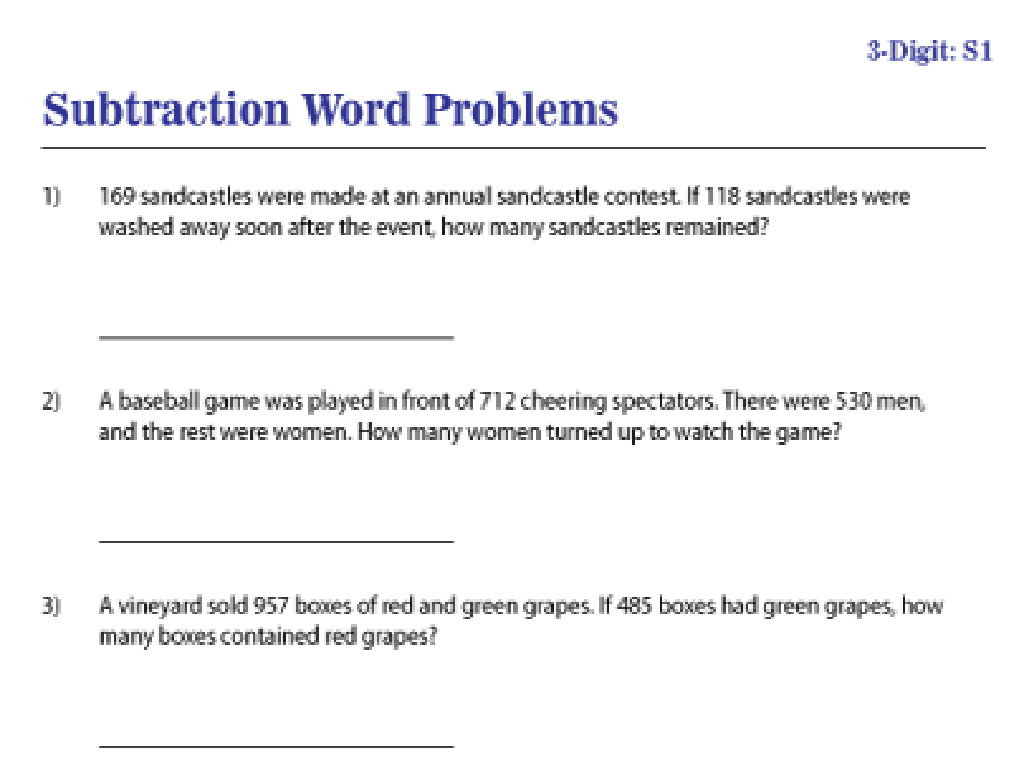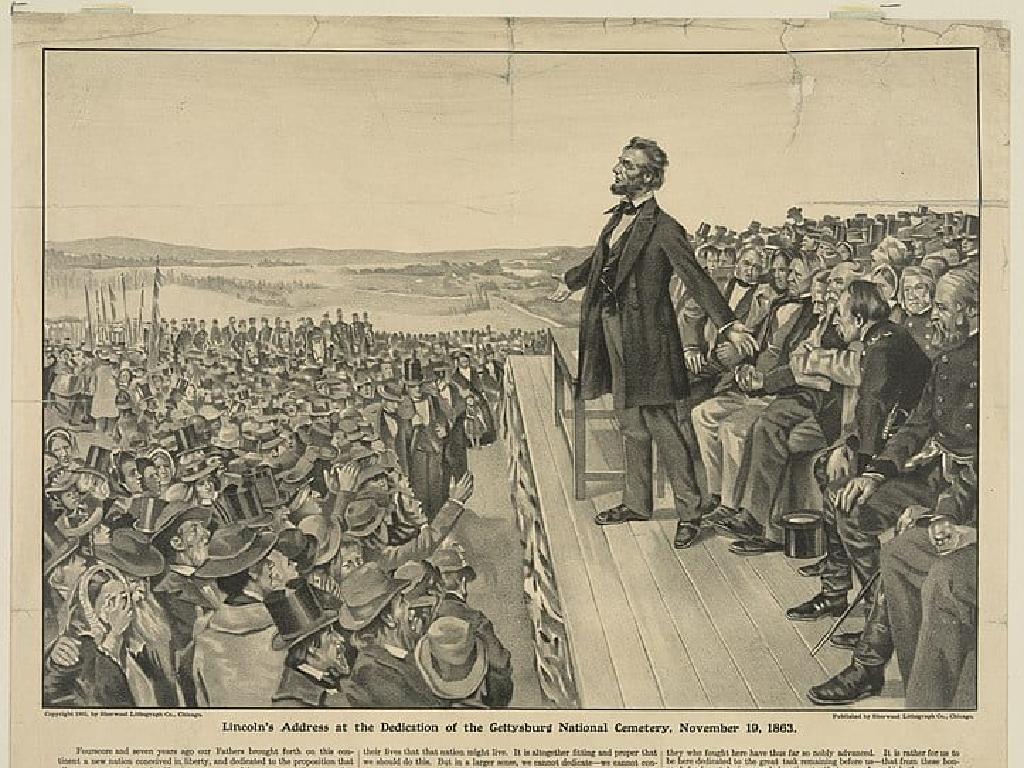Predictions And Trends In Scatter Plots
Subject: Math
Grade: Fifth grade
Topic: Data And Graphs
Please LOG IN to download the presentation. Access is available to registered users only.
View More Content
Predictions and Trends in Scatter Plots
– What is a scatter plot?
– A graph with dots representing data points
– Making educated guesses
– Use clues from the graph to predict
– Spotting the trend
– The direction or pattern the dots follow
– Why predictions matter
|
This slide introduces students to the concept of scatter plots and their importance in predicting future events or trends. Begin by explaining that a scatter plot is a type of graph used to show the relationship between two different variables. Teach students how to look at the scatter plot and make educated guesses about what could happen next by observing the pattern of the data points. Discuss the concept of ‘trend’ and how it shows the general direction in which something is developing or changing. Emphasize the value of making predictions in various real-life situations, such as weather forecasting or planning for resources. Engage the students by asking them to think of situations where predictions are important.
Exploring Scatter Plots
– Scatter plot introduction
– A graph showing how two variables relate
– Points represent value pairs
– Each dot shows a data pair on the plot
– Examining scatter plot examples
– Look at examples to see how they work
– Understanding relationships
– Learn to see trends and make predictions
|
Begin by explaining what a scatter plot is and its purpose in showing the relationship between two variables. Clarify that each point on the graph represents a pair of values, one on the x-axis and one on the y-axis. Use relatable examples, such as comparing hours of study to test scores, to help students visualize how scatter plots work. Emphasize that scatter plots can help us see if there’s a trend or pattern, which can lead to predictions about one variable based on the other. Encourage students to think of their own examples and consider what kind of trends they might expect to see.
Identifying Trends in Scatter Plots
– Trends indicate data direction
– Like a hike trail going up or down
– Trends: upward, downward, or none
– Is the data climbing up, sliding down, or just wandering?
– Group activity to identify trends
– Discuss our findings as a class
– Share what trends you see in different plots
|
This slide introduces the concept of trends in scatter plots, which is crucial for understanding data in a visual context. Explain that trends show the general direction in which a group of data points is heading. Compare it to a hiking trail that can go uphill, downhill, or be flat. During the group activity, provide students with several scatter plots and ask them to identify the trends they observe. Encourage them to use arrows or lines to visualize the direction of the data. After the activity, have a class discussion where students can present their findings and explain how they determined the trends. This will help solidify their understanding of how to interpret data from scatter plots.
Making Predictions with Scatter Plots
– Understanding predictions
– Predictions are educated guesses about what might happen next.
– Using trend lines
– A trend line shows the general direction of data in a scatter plot.
– Example: Sales predictions
– If sales increased over past years, we might guess they continue to rise.
– Practice with real data
|
This slide introduces the concept of making predictions using scatter plots, which is a crucial aspect of understanding data in mathematics. Students will learn that predictions are not just random guesses but are based on analyzing trends from existing data. By drawing a trend line on a scatter plot, we can visually see the direction in which the data is heading and make informed predictions about future events or values. For example, if a company’s sales have been increasing each year, we can predict that the trend will continue. It’s important to provide students with real data to practice making their own predictions and to understand that while predictions are educated guesses, they may not always be accurate.
Drawing Trend Lines in Scatter Plots
– What is a trend line?
– A straight line that best fits the data points on a scatter plot.
– Trend line shows direction
– It can go up, down, or stay flat to show data movement.
– Drawing a trend line activity
– Trend lines in real life
– Examples: Heights growing over time, temperatures changing with seasons.
|
A trend line is a powerful tool in understanding data in scatter plots. It’s a straight line drawn through the center of the data points that best represents the data’s pattern. This line can slope upwards, downwards, or remain horizontal, indicating the general direction in which the data is moving. During the class activity, guide students to draw trend lines on a scatter plot by looking for a line that has about as many points above it as below it. Emphasize that the trend line is a tool for predicting future data points or understanding the relationship between variables. Provide real-life examples where trend lines are used, such as predicting someone’s growth in height over the years or changes in temperature across seasons.
Class Activity: Create Your Own Scatter Plot!
– Collect your own data
– Create a scatter plot
– Use graph paper to plot each data point
– Draw a trend line on your plot
– Draw a line that shows the data’s direction
– Share your predictions with the class
|
In this engaging class activity, students will apply their knowledge of scatter plots by collecting their own data on a topic of interest. They could measure the height of plants over time, or track daily temperatures. After gathering data, they will create a scatter plot on graph paper, carefully plotting each data point. Next, they will draw a trend line that best fits their data points to understand the overall direction of the data. Finally, students will make predictions based on their trend line and share their findings with the class. This activity will help solidify their understanding of how scatter plots can be used to identify trends and make predictions. Possible activities for different students could include tracking sports scores, monitoring study times vs. grades, or observing bird sightings in a week.
Wrapping Up: Scatter Plots & Predictions
– Recap: Scatter Plots
A graph showing the relationship between two sets of data.
– Understanding Trends
Trends show the direction of data points in a scatter plot.
– Making Predictions
Use trends to guess future events or values.
– Real-life Applications
How scatter plots help in weather forecasting, business sales, etc.
|
As we conclude today’s lesson on scatter plots, trends, and predictions, let’s review the key concepts. Scatter plots are valuable tools in understanding the relationship between two variables. Identifying trends within these plots allows us to make informed predictions about future data points. These skills are crucial in various real-life situations, such as predicting weather patterns or analyzing business trends. Encourage students to ask questions about what they’ve learned and share any exciting discoveries they’ve made during the lesson. This engagement will help solidify their understanding and see the practical applications of these mathematical concepts.






